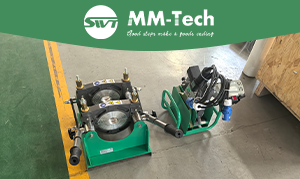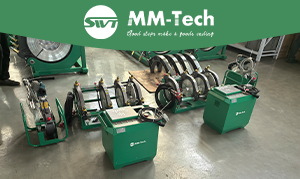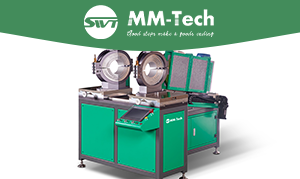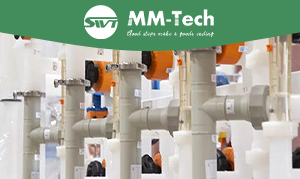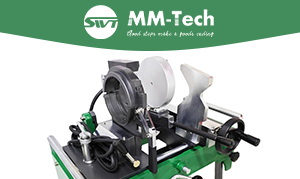A saddle fusion welding machine lets you join HDPE pipes. You can use it to connect pipes with different sizes. People use it in plumbing and building work. Good equipment and careful steps make strong, leak-free joints. This machine helps pipes fit together well. Your work will be safe and last a long time.
Key Takeaways
Always get ready for safety by putting on safety gear and looking at your work area before you use the saddle fusion welding machine. Make sure you are safe before you start.
Follow easy steps to set up. Clean the pipe surfaces. Make sure the pipes line up right. This helps you make strong joints that do not leak.
Check your welds after they cool. Look for even beads and no spaces. This makes sure your work is strong and good.
Saddle Fusion Welding Machine Overview
Key Components
When you use a saddle fusion welding machine, you work with many important parts. Each part helps you make strong joints for HDPE pipes. The table below shows what each part does:
Function | Description |
|---|---|
Preparation and Cleaning | Clean the pipe and fitting surfaces before you start. |
Clamping | Hold the pieces still so they do not move while you work. |
Marking and Alignment | Make sure the saddle fitting is in the right spot on the pipe. |
Heating | Use special heating tools to melt the pipe and fitting surfaces. |
Timing | Heat the parts for the right amount of time. |
Cooling | Let the joint cool without touching it so it gets hard. |
Inspection | Look at the joint to check for problems after it cools. |
Testing | Test the joint with pressure to make sure it does not leak. |
Documentation | Write down what you did and check the quality for records. |
The saddle fusion tool uses metal and plastic. These materials make the tool strong and help it last. The hydraulic system lets you control the tool exactly. The heating plate has Teflon so melted plastic does not stick. This makes your job easier and helps the tool last longer.
The SWT-S315 saddle fusion welding machine has a strong bed and straight guides. These guides keep the heating plate and pipes in the right place. You get smooth movement, which helps you make good welds. The machine has hydraulic jaws for the main pipe and a manual jaw for the branch pipe. This setup locks the pipes so you can work safely.
Operation and Features
You can use the saddle fusion machine for many jobs. It works for water pipes, gas pipes, irrigation, and factories. You need strong joints that do not leak. The saddle fusion tool helps you make these joints.
The SWT-S315 works in cold and hot places, from -10°C to 45°C. It can heat up to 320°C. You need a 220V power supply to use it. The machine has a CE certificate, so it meets safety and quality rules. Here are some important details:
Attribute | Details |
|---|---|
Temperature Range | Up to 320°C |
Voltage | 220V |
Certification | CE Certificate |
Warranty | 2 Years |
One special thing about the SWT-S315 is that it can weld and tape in one step. You can finish the whole job at once. This saves time and helps you make fewer mistakes. The heating plate moves by hand and fits both male and female sockets. You can take off the heating plate if you need to, which gives you more options.
The straight guides help you get good results. They keep the heating plate and dragging plate moving smoothly. You get the right position every time. This is important for making strong welds. When you use the saddle fusion tool, your joints will be strong and safe.
Tip: Always check your saddle fusion welding machine before you use it. Look for damage or anything strange. Wear safety glasses and gloves to protect yourself.
The SWT-S315 is a great tool for people who work with HDPE pipes. It gives you control, accuracy, and trust for good results.
Fusion Process
Setup Steps
You need to follow clear steps before you start welding with a saddle fusion welding machine. Careful setup helps you get strong, leak-free joints. Here is a simple guide you can use every time:
Prepare for Safety
Wear safety glasses and gloves. Check your work area for hazards. Make sure the saddle fusion welding machine is clean and ready.Inspect Equipment
Look at the machine for any damage. Check the heating plate and clamps. Make sure all parts move smoothly.Prepare Pipes and Fittings
Clean the pipe and fitting surfaces. Use a scraper to remove dirt and oxidation. Dry the surfaces before you start.Align and Secure Fittings
Place the main pipe in the hydraulic jaws. Lock it in place. Use the manual jaw to hold the branch pipe. Make sure the saddle fitting sits in the right spot.Set Parameters
Adjust the temperature and pressure on the saddle fusion tool. If you do not see a label for fusion force, use the machine manual or ask an expert for the right settings.Connect and Test
Plug in the machine. Check that the heating plate heats up to the right temperature. Test the movement of the slide and clamps.
Tip: Always double-check your alignment before you start the saddle fusion procedure. Good alignment means a stronger weld.
Welding Procedure
You can use the saddle fusion welding machine for many pipe sizes. Each size needs the right heat and cooling time. The table below shows the standard times for common pipe sizes:
Pipe Size | Max Heat Time | Min Cooling Time |
|---|---|---|
1-1/4” IPS | 1/16” melt pattern at fitting base. Max 15 seconds hot tapping. | 5 min + 30 min |
2” IPS | 1/16” melt pattern at fitting base. Max 15 seconds hot tapping. | 10 min + 30 min |
3” IPS & Greater | 1/16” melt pattern at fitting base. | 10 min + 30 min |
Follow these steps for the saddle fusion procedure:
Place the heating plate between the pipe and the fitting.
Wait for the surfaces to melt. Watch for a 1/16” melt pattern at the fitting base.
Remove the heating plate quickly and join the parts. Press them together with steady force.
Hold the joint still. Let it cool for the time shown in the table.
Do not move or touch the joint during cooling.
Note: If you do not know the exact fusion force, start with a moderate setting. Watch the melt pattern. Adjust the pressure if you see too much or too little melt.
Inspection and Troubleshooting
After you finish the weld, you need to check your work. A good weld looks even and smooth. You should see a clear three-bead shape around the joint. This shows the fusion is strong and complete.
Look for these signs during inspection:
No gaps or holes in the weld.
The bead is even all the way around.
No burn marks or bubbles.
If you find a problem, use this table to help fix it:
Prevention Method | |
|---|---|
Poor Joint Fit-Up and Design | Use the right bevel angle and root gap. Keep pipes aligned with the saddle fusion tool. |
Overlooking Equipment Calibration and Maintenance | Check machine settings often. Replace worn parts. |
Improper Weld Preparation | Clean all surfaces. Make sure the ground connection is good. |
Welding in Poor Environmental Conditions | Use covers or tents if you work outside. Preheat pipes if it is cold or wet. |
If you see uneven beads, check your alignment and pressure.
If the weld looks weak, check the heating time and temperature.
If you see bubbles, make sure the surfaces were dry and clean before welding.
Tip: Keep a record of each weld. Write down the pipe size, settings, and inspection results. This helps you improve your work and meet quality standards.
You can make strong saddle fusion joints by doing a few steps. First, line up the pipes and clamp them tight. Next, clean the surfaces so they are ready. Then, heat the pipes and fuse them together. After that, let the pipes cool down. Always look at your work to check for problems. Take care of your saddle fusion tool so it works well.
FAQ
How do you know if the weld is strong?
You should see a smooth, even bead around the joint. No gaps or bubbles. The joint should not move when you press it.
Can you use the saddle fusion machine outdoors?
Yes, you can use it outdoors. Make sure the area is dry and clean. Cover your workspace if it rains or is very cold.
What should you do if the heating plate gets dirty?
Turn off the machine.
Let the plate cool.
Wipe it with a soft, dry cloth.
Never use sharp tools to clean it.


